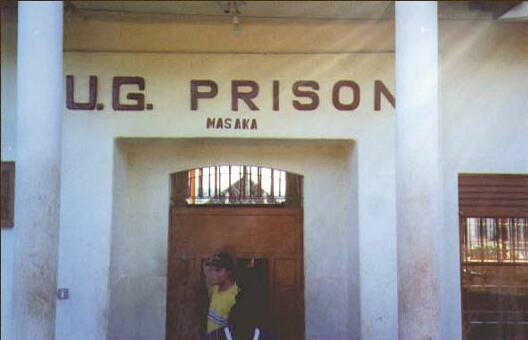 During colonial times, the principal penal facility was Luzira Prison near Kampala, although jails were common in larger towns. Prisoners in Luzira were separated according to categories such as long-term convicts, "recidivists," women, children, Asians, and Europeans. Cells for specific punishments and death row were also separate from the regular prison population, and the facility had several workshops and a hospital. The government also maintained smaller prisons for local convicts in Buganda, Bunyoro, Toro, and Ankole. Terms of less than six months were generally served in smaller jails located in each district. During colonial times, the principal penal facility was Luzira Prison near Kampala, although jails were common in larger towns. Prisoners in Luzira were separated according to categories such as long-term convicts, "recidivists," women, children, Asians, and Europeans. Cells for specific punishments and death row were also separate from the regular prison population, and the facility had several workshops and a hospital. The government also maintained smaller prisons for local convicts in Buganda, Bunyoro, Toro, and Ankole. Terms of less than six months were generally served in smaller jails located in each district.
In 1964 the Prison Service operated thirty prisons, many of which were actually industrial or agricultural facilities, intended to rehabilitate prisoners. By mid-1968, the Prison Service had a force of about 3,000 under the command of the commissioner of prisons.
During the 1970s, civilian and military prison conditions deteriorated, and prisoner abuse became common. At Makindye and Mutukula military prisons outside Kampala, for example, Langi and Acholi soldiers suspected of disloyalty to the regime were murdered. The PSU killed several thousand political opponents at the Uganda Police College at Naguru. At the SRB's Nakasero headquarters, some prisoners claimed they had survived through cannibalism.
Prison conditions in the early 1980s were also dismal. According to Amnesty International, the Obote regime imprisoned civilians without charge or for political crimes. Many were held in police stations, military barracks, and NSA detention centers. Almost all penal facilities were overcrowded, sometimes housing ten times the number of inmates intended. Other reports, however, indicated that members of the Uganda Prison Service sometimes treated inmates relatively humanely, allowing them to read, exercise, and attend religious services.
When Museveni seized power, he promised to improve the country's prison system, but this proved to be a difficult task, in part because so many people were arrested. In late 1986, the Uganda Human Rights Activists (UHRA) charged that the authorities had imprisoned as many as 10,000 people at the Murchison Bay Prison in western Uganda, a facility with an 800-inmate capacity. Moreover, the UHRA and Amnesty International claimed that prisoners lived in abominable conditions, which caused a number of deaths from disease.
In 1987 Museveni allowed the ICRC to survey conditions in Uganda's civil prisons. Although some reports suggested that prison conditions improved as a result, there had in fact been little change. In late 1990, for example, Chief Justice Samuel Wako Wambuzi condemned overcrowding in Masaka Central Prison. According to his investigation, the prison contained 456 inmates rather than the authorized 120 people. Similar conditions existed in most of Uganda's other prisons.
Data as of December 1990 - NOTE: The information regarding Uganda on this page is re-published from The Library of Congress Country Studies and the CIA World Factbook. No claims are made regarding the accuracy of Uganda Prison System information contained here. All suggestions for corrections of any errors about Uganda Prison System should be addressed to the Library of Congress and the CIA.
Sources: The Library of Congress Country Studies; CIA World Factbook
|